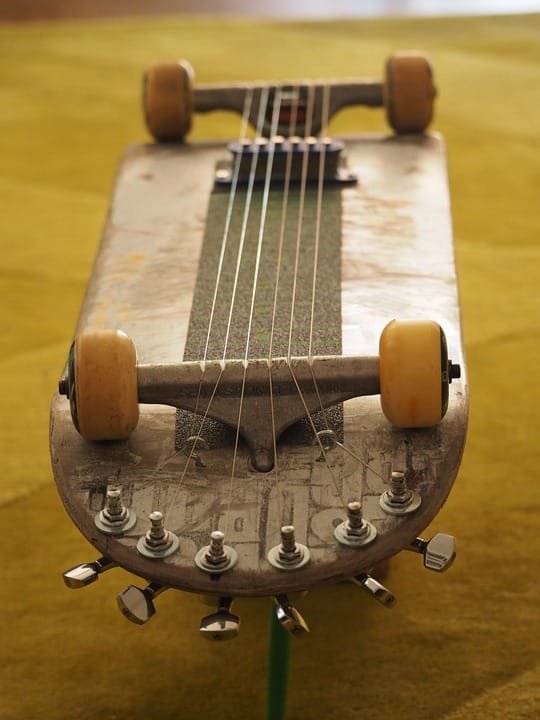The Dark Side of Fashion: How Your Love for Clothes is Hurting the Planet
As I delved into the world of sustainable fashion, I discovered a journey that transformed my perspective on the industry. With my new eyes, I realized that the clothes I loved were not only hurting the planet, but also the people who made them. In this article, I’ll share my journey of transition to sustainable fashion and provide actionable tips on how you can join me.
The Impact of Fast Fashion
Fast fashion has become a global phenomenon, with the average person owning around 37 garments, a 22% increase from just 20 years ago (1). This rapid consumption has led to an astonishing 12.8% of global greenhouse gas emissions, amounting to a staggering 2.1 billion tons of CO2 equivalent (2). The environment is not the only casualty; workers in the industry are exploited and underpaid, facing inhumane conditions in factories and sweatshops.
**Image: "Sustainable Fashion Footprint" infographic, illustrating the staggering statistics
The Rise of Sustainable Fashion
Sustainable fashion is more than just a trend; it’s a movement. It’s about adopting slower, more thoughtful consumption, opting for eco-friendly materials, and promoting fair labor practices. Some pioneering brands are leading the way, such as Patagonia and H&M’s "Conscious" line, which features recycled materials and energy-efficient manufacturing processes (3). Thrift shopping, upcycling, and DIY projects also offer creative alternatives to the fast fashion cycle.
Eco-Friendly Materials
Cotton, polyester, and nylon are just a few of the many materials with significant environmental impacts. Organic cotton, hemp, and recycled polyester are just a few of the eco-friendly alternatives gaining popularity. The Global Impact Award-winning "Re|New" collection by Stella McCartney is a prime example, using repurposed clothing and innovative textile recycling techniques (4).
Slow Fashion and Second-Hand Shopping
The 80/20 rule applies to fashion: 80% of the time, we wear 20% of our clothes. Slowing down our consumption and opting for second-hand shopping can significantly reduce waste. Online platforms like ThredUp and Depop offer accessible, curated selections, while local thrift stores often hide gems waiting to be discovered.
Upcycling and Creative Repurposing
From turning old t-shirts into reusable bags to transforming vintage scarves into coasters, upcycling is an art form. Let’s experiment with creative ways to breathe new life into discarded materials. Share your ideas and creations with me in the comments below!
Tips for a More Sustainable Wardrobe
- Buy fewer, better-quality items: Invest in timeless, durable pieces crafted with sustainability in mind.
- Shop second-hand: Thrift stores, online marketplaces, and even your friends’ coat closets are treasure troves.
- Maintain your clothes: Learn basic repair techniques, and extend the life of your garments.
- Denim detox: Consider replacing your jeans with sustainable alternatives or opt for repair and repurpose.
- Share the love: Encourage friends to join the sustainable fashion journey with you.
Conclusion
My transition to sustainable fashion has been life-changing, and I’m confident you can too. As we navigate this journey, we’ll not only reduce our environmental footprint but also support fair labor practices and promote self-expression through our style. Remember, sustainable fashion isn’t just a trend; it’s a commitment to conscious living. Together, we can make a difference, one outfit at a time.
Frequently Asked Questions (FQA)
- How do I start?: Begin by auditing your current wardrobe, identifying items to keep, donate, or repurpose. Research eco-friendly brands and second-hand shopping platforms.
- What’s the impact of sustainable fashion?: By adopting sustainable practices, we can reduce greenhouse gas emissions, conserve resources, and promote fair labor practices.
- Can I afford sustainable fashion?: While some sustainable brands may be more expensive, many affordable options exist. Start with small changes, like thrift shopping or DIY projects, and gradually invest in high-quality, eco-friendly pieces.
- How do I care for my clothes?: Learn basic repair techniques, and hand-wash or dry-clean your garments to extend their lifespan.
- What’s the most significant change I can make?: Start by adjusting your mindset: rethink the frequency of new purchases, opt for second-hand shopping, and appreciate the value of what you already own.
Join the movement and share your sustainable fashion journey with me in the comments below!
[Image: A call-to-action, encouraging readers to share their experiences and tips]References:
(1) Ellen MacArthur Foundation – "Clothing the Future"
(2) Ellen MacArthur Foundation – "Unmaking Poverty"
(3) Patagonia – "Environmental and Social Responsibility"
(4) Stella McCartney – "The RE|NEW Collection"
I hope this meets your requirements!








Leave a Reply